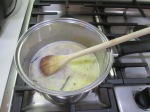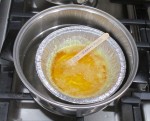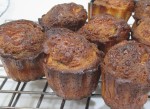I like sweets and I love chocolate. I prefer foods where the ingredients list includes sugar, in large quantities. However, sometimes the moment requires other ingredients. Sometimes the bounty of the garden needs to be included in foods, savory foods and you know… they aren’t bad, not bad at all. I made a variety of test veggie savory pastries for our upcoming party. (Sadly, this time of year, very little came from my garden.)
I used, in various combinations, olives, roasted red peppers, asparagus, tomato, several herbs and gorgonzola, cream, and parmesan cheeses. For these tart shells I used my standard tart recipe formed using small deep tart molds. Once the pastries were assembled I broiled them just long enough to melt, or at least soften the cheese. I apologize for not having a photo of the finished pastries. They… disappeared somehow after they were removed from the oven. Odd.
Asparagus and cream cheese pastry: Steamed asparagus was marinated in a mixture of balsamic vinegar, chives, parsley and tarragon then drained and patted dry. Softened cream cheese coated the bottom of the shell, about 1/4″ thick, salt and pepper to taste and cut spears of asparagus laid across the top.
Olive and roasted red pepper pastry: A layer of crumbed gorgonzola cheese covered the bottom of the shell. A large olive was placed in the middle of the shell, on top of the cheese. A roasted red pepper was sliced lengthwise to about 1/2″ wide and wrapped around the olive.
Tomato and cheese pastry: Fill the bottom of the shell with a 1/4″ thick layer of shredded parmesan cheese. Place a thin slice of cherry tomato on top of the cheese, coat with a little more parmesan cheese and top with a piece of fresh basil. (From my garden 🙂 )





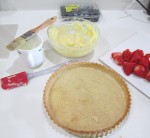


 night I thought it appropriate to have some Chinese desserts. I saw both fortune cookies (ok not a dessert per se, but usually served after the meal) and black sesame macarons on the cooking shows we regularly watch.
night I thought it appropriate to have some Chinese desserts. I saw both fortune cookies (ok not a dessert per se, but usually served after the meal) and black sesame macarons on the cooking shows we regularly watch. this post, intending to document it the next time I make them. I found black sesame seeds at a specialty market near home and ground them to make a coarse powder. This gave the macaron a different texture than simply using fine almond powder.
this post, intending to document it the next time I make them. I found black sesame seeds at a specialty market near home and ground them to make a coarse powder. This gave the macaron a different texture than simply using fine almond powder. adding the egg white. Second, she didn’t say when to add the black food coloring, so I added it after mixing the hot sugar mixture to the soft peak egg white and lastly I didn’t have any champagne so I just skipped it. The honey butter cream was awesome anyway.
adding the egg white. Second, she didn’t say when to add the black food coloring, so I added it after mixing the hot sugar mixture to the soft peak egg white and lastly I didn’t have any champagne so I just skipped it. The honey butter cream was awesome anyway.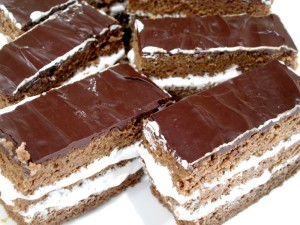 minutes, but the frosting started to flow a short time later. The other issue was tempering a small amount of chocolate. Because the cake was 1/3rd the original size I cut the
minutes, but the frosting started to flow a short time later. The other issue was tempering a small amount of chocolate. Because the cake was 1/3rd the original size I cut the









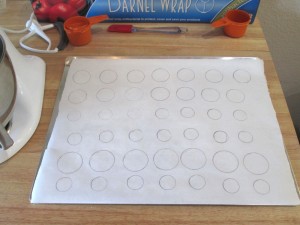

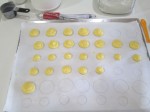 separate and then come together) and continue to mix until you have a smooth thick paste (dough will fall from a spoon in a thick ribbon).
separate and then come together) and continue to mix until you have a smooth thick paste (dough will fall from a spoon in a thick ribbon). desired, with a pastry brush, gently brush the tops of the dough with the lightly beaten egg.
desired, with a pastry brush, gently brush the tops of the dough with the lightly beaten egg. interior steam.
interior steam.





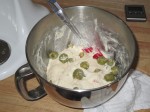
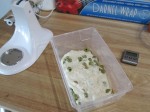
 possible.
possible.

 these with two different fillings,
these with two different fillings,  Luckily, I have long arms and can pat myself on the back easily and often.) Sadly, I only made a half a Kanellängd, not sure of the final result. More sadly, a half loaf of Kanellängd is only enough for QC, snack and breakfast. Next time a full Kanellängd loaf, to have enough to share.
Luckily, I have long arms and can pat myself on the back easily and often.) Sadly, I only made a half a Kanellängd, not sure of the final result. More sadly, a half loaf of Kanellängd is only enough for QC, snack and breakfast. Next time a full Kanellängd loaf, to have enough to share.


 half.
half.
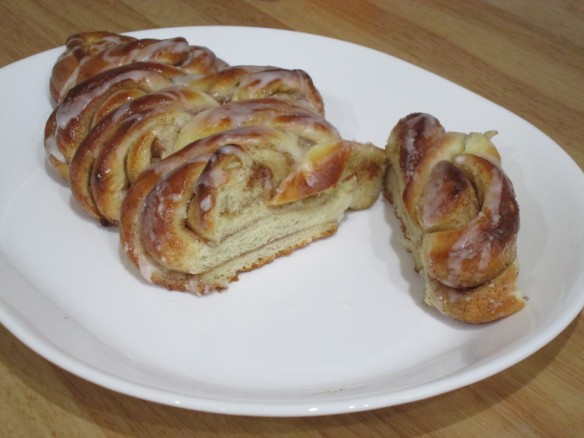
 A canelé is a small French
A canelé is a small French 